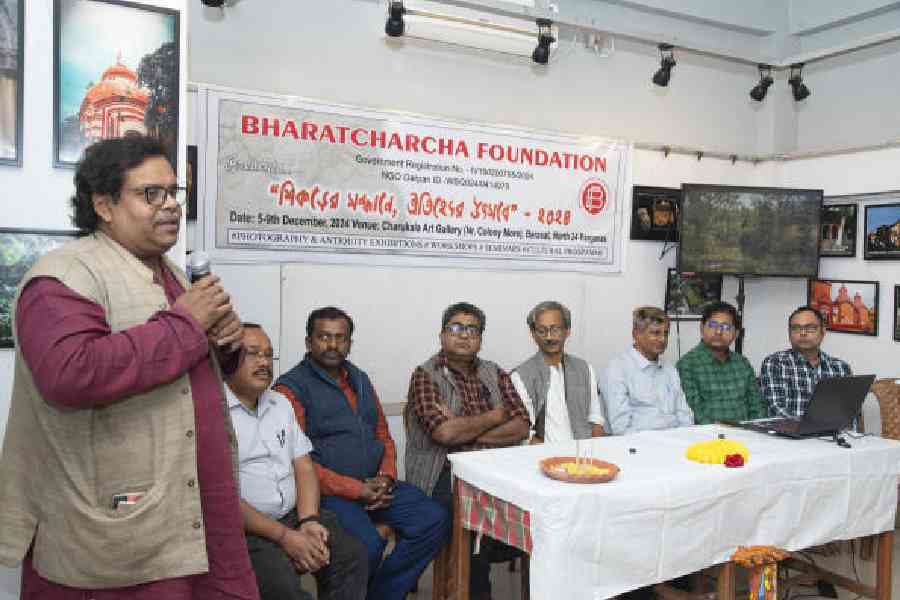Importance of heritage


The Bharatcharcha Foundation, under the motto “Together, Let’s Preserve Our Heritage!” hosted a vibrant five-day event from December 5 to 9 at the Charukala Art Gallery near Colony More in Barasat in North 24-Parganas. The event celebrated Bengal’s rich cultural and historical heritage and included exhibitions, interactive workshops, insightful seminars and cultural programmes.
The inaugural ceremony on December 5 was led by chief guest Rupendra Kumar Chattopadhyay, professor, Presidency University and former curator of Delhi University’s museum. Chattopadhyay delivered a compelling speech on historical preservation, emphasising two critical principles: rokkha (protection) and rokkhonabekhon (conservation).
On December 6, Swarup Bhattacharya, a visiting fellow of the Anthropological Survey of India and known as the “Boat Man of India”, conducted an engaging workshop in which students from multiple institutions as well as members of the community participated. An antiquities exhibition, curated by six renowned preservationists, showcased rare manuscripts and unique currencies, including the world’s largest and smallest denominations.
The seminar held on December 7 featured two sessions, drawing participation from students of various colleges and universities. Among the highlights was a mesmerising speech by Saanvi Sara, a talented young girl studying in Class IV, who captivated the audience with her remarkable presentation. In addition, a student from West Bengal State University delivered an insightful talk on the growth of museum anthropology in India.
The first session was conducted by Krishendu Polley of Bidhannagar College. In the second session, Madhulika Samanta, director of the National Mission on Monuments and Antiquities, delivered an enlightening lecture. She shared valuable insights into archaeological techniques, dating methods and digital documentation using GIS software. Furthermore, Sougata Mukhopadhyaya, assistant professor in the department of Sanskrit at the University of Burdwan, emphasised the importance of Sanskrit in the preservation of cultural heritage. In the second session, Anita Bose, an author and artist guide at Bangkok’s National Museum, offered a cross-cultural perspective by discussing the Ramayana and South Asian traditions, such as Saraswati Puja and Buddhist water-pouring ceremonies. Subha Majumdar, the superintending archaeologist of Vadodara Circle, moderated the final session and highlighted the importance of local histories, folklore and Sanskrit in preserving cultural heritage. He also served as the moderator for the second half of the session.
On December 8, a workshop was organised in collaboration with the RICH Foundation on Cultural Heritage. The session was led by Surajit Maiti, former director of science at the Archaeological Survey of India, who conducted a hands-on session on heritage conservation. This interactive session provided participants with valuable practical experience in preserving cultural artifacts and understanding the scientific methodologies used in conservation practices. The workshop aimed to raise awareness about the importance of safeguarding our rich cultural heritage for future generations.
The event concluded on December 9 with a cultural celebration, leaving participants inspired and equipped to contribute to the preservation of India’s heritage.
Satarupa Sarkar
Second year MSc anthropology, West Bengal State University, Calcutta